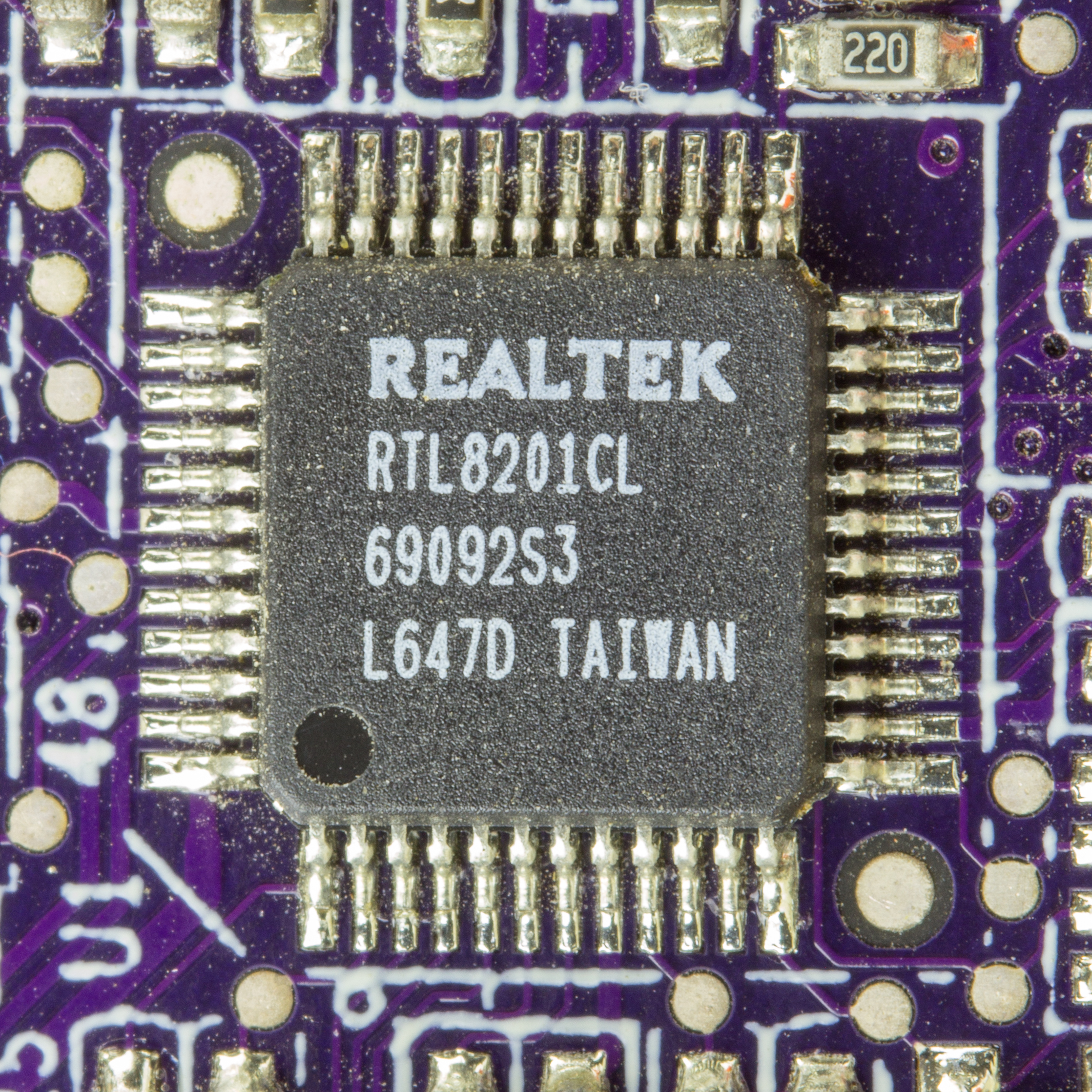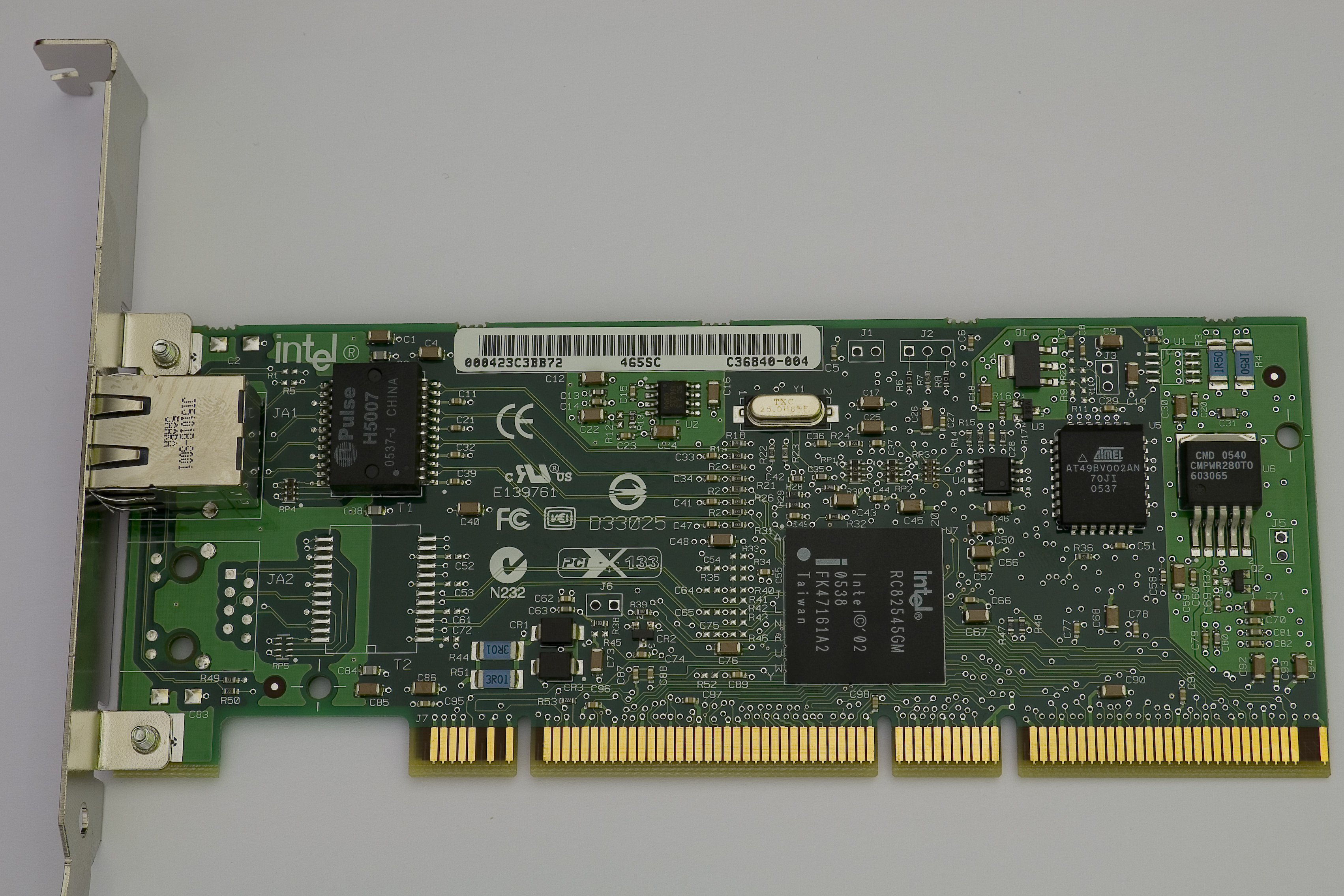|
Autonegotiation
Autonegotiation is a signaling mechanism and procedure used by Ethernet over twisted pair by which two connected devices choose common transmission parameters, such as speed, duplex mode, and flow control. In this process, the connected devices first share their capabilities regarding these parameters and then choose the highest performance transmission mode they both support. Autonegotiation is defined in clause 28 of IEEE 802.3. and was originally an optional component in the Fast Ethernet standard. It is backwards compatible with the normal link pulses (NLP) used by 10BASE-T. The protocol was significantly extended in the Gigabit Ethernet standard, and is mandatory for 1000BASE-T gigabit Ethernet over twisted pair. In the OSI model, autonegotiation resides in the physical layer. Standardization and interoperability In 1995, the Fast Ethernet standard was released. Because this introduced a new speed option for the same wires, it included a means for connected network adapter ... [...More Info...] [...Related Items...] OR: [Wikipedia] [Google] [Baidu] |
Ethernet
Ethernet () is a family of wired computer networking technologies commonly used in local area networks (LAN), metropolitan area networks (MAN) and wide area networks (WAN). It was commercially introduced in 1980 and first standardized in 1983 as IEEE 802.3. Ethernet has since been refined to support higher bit rates, a greater number of nodes, and longer link distances, but retains much backward compatibility. Over time, Ethernet has largely replaced competing wired LAN technologies such as Token Ring, FDDI and ARCNET. The original 10BASE5 Ethernet uses coaxial cable as a shared medium, while the newer Ethernet variants use twisted pair and fiber optic links in conjunction with switches. Over the course of its history, Ethernet data transfer rates have been increased from the original to the latest , with rates up to under development. The Ethernet standards include several wiring and signaling variants of the OSI physical layer. Systems communicating over ... [...More Info...] [...Related Items...] OR: [Wikipedia] [Google] [Baidu] |
Duplex Mismatch
On an Ethernet connection, a duplex mismatch is a condition where two connected devices operate in different duplex modes, that is, one operates in half duplex while the other one operates in full duplex. The effect of a duplex mismatch is a link that operates inefficiently. Duplex mismatch may be caused by manually setting two connected network interfaces at different duplex modes or by connecting a device that performs autonegotiation to one that is manually set to a full duplex mode. Duplex mismatch due to autonegotiation When a device set to autonegotiation is connected to a device that is not using autonegotiation, the autonegotiation process fails. The autonegotiating end of the connection is still able to correctly detect the speed of the other end, but cannot correctly detect the duplex mode. For backward compatibility with Ethernet hubs, the standard requires the autonegotiating device to use half duplex in these conditions. Therefore, the autonegotiating end of the ... [...More Info...] [...Related Items...] OR: [Wikipedia] [Google] [Baidu] |
Ethernet Over Twisted Pair
Ethernet over twisted-pair technologies use twisted-pair cables for the physical layer of an Ethernet computer network. They are a subset of all Ethernet physical layers. Early Ethernet used various grades of coaxial cable, but in 1984, StarLAN showed the potential of simple unshielded twisted pair. This led to the development of 10BASE-T and its successors 100BASE-TX, 1000BASE-T and 10GBASE-T, supporting speeds of 10 and 100 megabit per second, then 1 and 10 gigabit per second respectively. Two new variants of 10 megabit per second Ethernet over a ''single'' twisted pair, known as 10BASE-T1S and 10BASE-T1L, were standardized in IEEE Std 802.3cg-2019. 10BASE-T1S has its origins in the automotive industry and may be useful in other short-distance applications where substantial electrical noise is present. 10BASE-T1L is a long-distance Ethernet, supporting connections up to 1 km in length. Both of these standards are finding applications implementing the ... [...More Info...] [...Related Items...] OR: [Wikipedia] [Google] [Baidu] |
Physical Layer
In the seven-layer OSI model of computer networking, the physical layer or layer 1 is the first and lowest layer; The layer most closely associated with the physical connection between devices. This layer may be implemented by a PHY chip. The physical layer provides an electrical, mechanical, and procedural interface to the transmission medium. The shapes and properties of the electrical connectors, the frequencies to broadcast on, the line code to use and similar low-level parameters, are specified by the physical layer. Role The physical layer defines the means of transmitting a stream of raw bits over a physical data link connecting network nodes. The bitstream may be grouped into code words or symbols and converted to a physical signal that is transmitted over a transmission medium. The physical layer consists of the electronic circuit transmission technologies of a network. It is a fundamental layer underlying the higher level functions in a network, and can be ... [...More Info...] [...Related Items...] OR: [Wikipedia] [Google] [Baidu] |
1000BASE-TX
In computer networking, Gigabit Ethernet (GbE or 1 GigE) is the term applied to transmitting Ethernet frames at a rate of a gigabit per second. The most popular variant, 1000BASE-T, is defined by the IEEE 802.3ab standard. It came into use in 1999, and has replaced Fast Ethernet in wired local networks due to its considerable speed improvement over Fast Ethernet, as well as its use of cables and equipment that are widely available, economical, and similar to previous standards. History Ethernet was the result of research conducted at Xerox PARC in the early 1970s, and later evolved into a widely implemented physical and link layer protocol. Fast Ethernet increased the speed from 10 to 100 megabits per second (Mbit/s). Gigabit Ethernet was the next iteration, increasing the speed to 1000 Mbit/s. * The initial standard for Gigabit Ethernet was produced by the IEEE in June 1998 as IEEE 802.3z, and required optical fiber. 802.3z is commonly referred to as 1000BASE-X, ... [...More Info...] [...Related Items...] OR: [Wikipedia] [Google] [Baidu] |
1000BASE-T
In computer networking, Gigabit Ethernet (GbE or 1 GigE) is the term applied to transmitting Ethernet frames at a rate of a gigabit per second. The most popular variant, 1000BASE-T, is defined by the IEEE 802.3ab standard. It came into use in 1999, and has replaced Fast Ethernet in wired local networks due to its considerable speed improvement over Fast Ethernet, as well as its use of cables and equipment that are widely available, economical, and similar to previous standards. History Ethernet was the result of research conducted at Xerox PARC in the early 1970s, and later evolved into a widely implemented physical and link layer protocol. Fast Ethernet increased the speed from 10 to 100 megabits per second (Mbit/s). Gigabit Ethernet was the next iteration, increasing the speed to 1000 Mbit/s. * The initial standard for Gigabit Ethernet was produced by the IEEE in June 1998 as IEEE 802.3z, and required optical fiber. 802.3z is commonly referred to as 1000BA ... [...More Info...] [...Related Items...] OR: [Wikipedia] [Google] [Baidu] |
Gigabit Ethernet
In computer networking, Gigabit Ethernet (GbE or 1 GigE) is the term applied to transmitting Ethernet frames at a rate of a gigabit per second. The most popular variant, 1000BASE-T, is defined by the IEEE 802.3ab standard. It came into use in 1999, and has replaced Fast Ethernet in wired local networks due to its considerable speed improvement over Fast Ethernet, as well as its use of cables and equipment that are widely available, economical, and similar to previous standards. History Ethernet was the result of research conducted at Xerox PARC in the early 1970s, and later evolved into a widely implemented physical and link layer protocol. Fast Ethernet increased the speed from 10 to 100 megabits per second (Mbit/s). Gigabit Ethernet was the next iteration, increasing the speed to 1000 Mbit/s. * The initial standard for Gigabit Ethernet was produced by the IEEE in June 1998 as IEEE 802.3z, and required optical fiber. 802.3z is commonly referred to as 1000BASE-X, ... [...More Info...] [...Related Items...] OR: [Wikipedia] [Google] [Baidu] |
Frame Check Sequence
A frame check sequence (FCS) is an error-detecting code added to a frame in a communication protocol. Frames are used to send payload data from a source to a destination. Purpose All frames and the bits, bytes, and fields contained within them, are susceptible to errors from a variety of sources. The FCS field contains a number that is calculated by the source node based on the data in the frame. This number is added to the end of a frame that is sent. When the destination node receives the frame the FCS number is recalculated and compared with the FCS number included in the frame. If the two numbers are different, an error is assumed and the frame is discarded. The FCS provides error detection only. Error recovery must be performed through separate means. Ethernet, for example, specifies that a damaged frame should be discarded and does not specify any action to cause the frame to be retransmitted. Other protocols, notably the Transmission Control Protocol (TCP), can no ... [...More Info...] [...Related Items...] OR: [Wikipedia] [Google] [Baidu] |
Collision (telecommunications)
A collision is the situation that occurs when two or more demands are made simultaneously on equipment that can handle only one at any given instant.Source: from Federal Standard 1037C and from MIL-STD-188 It may refer to: * Collision domain, a physical network segment where data packets can "collide" ** Carrier-sense multiple access with collision avoidance, (CSMA/CA) used for example with wireless LANs ** Carrier-sense multiple access with collision detection, (CSMA/CD) used with Ethernet * Late collision, a specific type of collision that should not occur on properly operating networks * Local collision is a collision that occurs in the network interface rather than on the network itself See also * Collision (other) * Contention (telecommunications) In statistical time division multiplexing, contention is a media access method that is used to share a broadcast medium. In contention, any computer in the network can transmit data at any time (first come-first served ... [...More Info...] [...Related Items...] OR: [Wikipedia] [Google] [Baidu] |
Duplex (telecommunications)
A duplex communication system is a point-to-point system composed of two or more connected parties or devices that can communicate with one another in both directions. Duplex systems are employed in many communications networks, either to allow for simultaneous communication in both directions between two connected parties or to provide a reverse path for the monitoring and remote adjustment of equipment in the field. There are two types of duplex communication systems: full-duplex (FDX) and half-duplex (HDX). In a full-duplex system, both parties can communicate with each other simultaneously. An example of a full-duplex device is plain old telephone service; the parties at both ends of a call can speak and be heard by the other party simultaneously. The earphone reproduces the speech of the remote party as the microphone transmits the speech of the local party. There is a two-way communication channel between them, or more strictly speaking, there are two communication chann ... [...More Info...] [...Related Items...] OR: [Wikipedia] [Google] [Baidu] |





